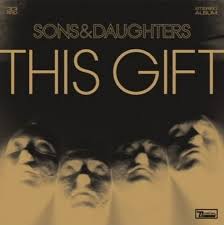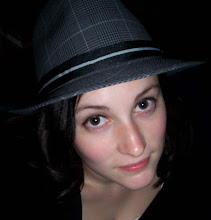
Okay, so I’m a bit behind the times on this one, what with its sequel, Superfreakonomics out now in your friendly neighbourhood bookstore. I’d been thinking about reading Freakonomics for years, and kept putting it off. I don’t read a huge amount of non-fiction—in fact, I can only remember reading Tom Wolfe’s The Right Stuff (science), Anne Fadiman’s The Spirit Catches You And You Fall Down (sob-inducing cultural hardship), D T Max’s The Family That Couldn’t Sleep (science), Xinran’s The Good Women of China and China Witness (sob-inducing cultural hardship), and Atul Gawande’s Complications (science). See a theme? Generally, however, I’m a fiction kinda girl. I’ve attempted many more non-fiction books but can rarely get past the fact that there won’t be dinosaurs or unicorns or far-fetched plot twists. Even with something as tempting as the cover of Simon Sebag Montefiore’s Young Stalin, I couldn’t get more than about fifty pages in. Seriously, have you seen it? How upsettingly attractive was the youthful Stalin? How did someone so dashing become such a complete [insert word here, I can only think of swears]?

See?
Ahem. Anyway, Steven D Levitt (economist) and Stephen J Dubner (writer), who I will now just call The Steves, teamed up to write this successful book about the stranger aspects of economics back in 2005, and it became a bestseller. It always seemed strange that a book on economics would be so popular, but then, if we could all pick such things that first person wouldn’t have rejected J K Rowling’s Harry Potter series and be thwacking themselves repeatedly on the head now in regret. It turns out that it’s popular for good reason: it’s entertaining, and fascinating, and all backed up by footnotes to help you in all the ridiculous arguments that you’ll find yourself getting into. For example, did you know the one thing that caused crime to decrease in the US in the 1990s? Some suggestions have been a bigger police presence (part of it), tougher gun control laws, etc. But the one defining reason that people never really talk about is that decades earlier, in 1973, abortion was legalised.
It’s an uncomfortable idea, isn’t it? The Steves don’t offer their opinion on whether one cancels the other or what have you, but they’re willing to give you the facts as they see them. It doesn’t matter if you’re pro-life or pro-choice, these are statistics. And you can work from there yourself.
I’ve always enjoyed statistics, though have been told by numerous stressed uni friends that I don’t want to be studying them any time soon. I don’t have a great memory, so I’m never accused of spouting false statistics. Mostly I just use disclaimers: “I heard something like that there was maybe some percentage of teachers that cheat on behalf of their students, or something.” Now, I’m tempted to carry Freakonomics around with me so I can say forcefully, “Did you know that five percent of teachers will cheat on behalf of their students for benefits? DISGUSTING.” Because it’s stuff like this that you’ll want to tell everyone. Chapter headings are fascinating: “Why Do Drug Dealers Still Live with Their Moms?”, “What Do Schoolteachers and Sumo Wrestlers Have in Common?” (cheating, those punks), “How Is the Ku Klux Klan Like a Group of Real-Estate Agents?” (hint: it’s not the uniforms.) There’s a chapter on the effect your child’s name will have, and as a professed lover of name drama, I very much enjoyed this. What happens if you name one son Loser and the other Winner? (Someone has done this. Hey, don’t look so surprised.) Is a unique name better? What if you spell it “Uneek”, “Uneque”, or “Uneqqee”? (These are also all real names.) There’s also a list of what the cool names will probably be in 2015, and imagine my surprise when Fiona was on that list—I haven’t met a Fiona younger than me yet, and assumed that once I’d been named the world reached the pinnacle of awesome Fionas and gave up. Unfortunately the name I’d always favoured for my future (well-behaved, truly delightful) daughter was on the list too, so that’s the chapter I will be pretending isn’t backed up by any facts.
Ahem. Anyway, Steven D Levitt (economist) and Stephen J Dubner (writer), who I will now just call The Steves, teamed up to write this successful book about the stranger aspects of economics back in 2005, and it became a bestseller. It always seemed strange that a book on economics would be so popular, but then, if we could all pick such things that first person wouldn’t have rejected J K Rowling’s Harry Potter series and be thwacking themselves repeatedly on the head now in regret. It turns out that it’s popular for good reason: it’s entertaining, and fascinating, and all backed up by footnotes to help you in all the ridiculous arguments that you’ll find yourself getting into. For example, did you know the one thing that caused crime to decrease in the US in the 1990s? Some suggestions have been a bigger police presence (part of it), tougher gun control laws, etc. But the one defining reason that people never really talk about is that decades earlier, in 1973, abortion was legalised.
It’s an uncomfortable idea, isn’t it? The Steves don’t offer their opinion on whether one cancels the other or what have you, but they’re willing to give you the facts as they see them. It doesn’t matter if you’re pro-life or pro-choice, these are statistics. And you can work from there yourself.
I’ve always enjoyed statistics, though have been told by numerous stressed uni friends that I don’t want to be studying them any time soon. I don’t have a great memory, so I’m never accused of spouting false statistics. Mostly I just use disclaimers: “I heard something like that there was maybe some percentage of teachers that cheat on behalf of their students, or something.” Now, I’m tempted to carry Freakonomics around with me so I can say forcefully, “Did you know that five percent of teachers will cheat on behalf of their students for benefits? DISGUSTING.” Because it’s stuff like this that you’ll want to tell everyone. Chapter headings are fascinating: “Why Do Drug Dealers Still Live with Their Moms?”, “What Do Schoolteachers and Sumo Wrestlers Have in Common?” (cheating, those punks), “How Is the Ku Klux Klan Like a Group of Real-Estate Agents?” (hint: it’s not the uniforms.) There’s a chapter on the effect your child’s name will have, and as a professed lover of name drama, I very much enjoyed this. What happens if you name one son Loser and the other Winner? (Someone has done this. Hey, don’t look so surprised.) Is a unique name better? What if you spell it “Uneek”, “Uneque”, or “Uneqqee”? (These are also all real names.) There’s also a list of what the cool names will probably be in 2015, and imagine my surprise when Fiona was on that list—I haven’t met a Fiona younger than me yet, and assumed that once I’d been named the world reached the pinnacle of awesome Fionas and gave up. Unfortunately the name I’d always favoured for my future (well-behaved, truly delightful) daughter was on the list too, so that’s the chapter I will be pretending isn’t backed up by any facts.
If you’re interested in the quirks of life, of what really matters in parenting (you’ll be surprised, and probably bummed), of how race matters, this is a great read that feels like it is without bias and very honest. I’ll probably try and procure myself a copy of Superfreakonomics sooner rather than later, because my only complaint with its forebear is that it was too damn short, and its authors were so good that I didn’t have the opportunity to use the phrase “The Steves” more.











